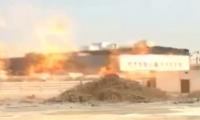LAHORE: Most of our entrepreneurs know they cannot compete globally without state subsidies mostly because the outdated technologies currently in use, but policy planners are dead to the fact that manufacturing would ultimately come to a crumbling halt if these subsidies continued.
In the 20th century, industrial technology used to go obsolete in 20 years. In this century it becomes redundant after every five years because of powerful and disruptive innovations globally. Through subsidies, we cannot finance the wide productivity and efficiency gap that disruptive technologies have created.
The domestic industries are regularly losing global markets and are increasingly dependent on domestic sales to survive. The nominal increase in exports in recent months has been possible on the strength of increased subsidies from the state. Still as far as our share in global trade is concerned it is declining every year.
We are rejoicing in the double-digit growth of the large scale manufacturing sector but barring cement most of the growth is based on government subsidy. The state gives protection to the local auto sector which is a kind of subsidy to check foreign automobiles. This protection is there for over three decades. You withdraw protection, industry will nosedive. We are not exporting cars because we are not competitive in the global market. We compromise on quality and facilities because of this protection. In exports which are zero-rated even then we have to subsidise our major exports to make them acceptable in the global markets. Low value-added exports would not solve our foreign exchange problem. It has to be a high value-addition that is only possible through updated technology. The manufacturing policy must support value-addition only instead of protecting industries producing low-valued products.
This government has resolved most of the macroeconomic issues (though through heavy borrowing). Better macroeconomic indicators encourage industrialisation. However, when the state is protecting obsolete technologies through subsidies the current industrial operators don’t feel obliged to upgrade technology.
Planners should provide appropriate incentives to promote technology upgrades in the manufacturing sector. The large-scale manufacturing sector posted a decline during the first 20 months tenure of this government. It is heartening that it is now constantly posting growth. But it is not creating the jobs that are badly needed. Most of the existing industries are operating below installed capacities.
Cement is perhaps the only exception that has shown real growth -thanks to the housing package announced by this government. Higher cement production has engaged millions of unskilled workers. The planners must however realise that construction jobs are temporary and move on to other regions when the project in one area is completed. The workers of that area are deprived of jobs that benefit the workers where the new construct activities shift.
Moreover unskilled labour gets low wages. In contrast the manufacturing jobs are permanent and mostly provide the employees with better career prospects.
The major reasons for the reduced level of contribution by manufacturing has been the inability of the country to build and maintain competitiveness needed to meet the global challenges as well as to develop a larger domestic market through low-cost production. Besides carrying the major burden of creating employment opportunities the effect of improvement in the manufacturing sector goes far beyond the goods provided by it.
Manufacturing sector in Pakistan failed to cope with the changes that took place in the last 35 years. This is not possible without a viable manufacturing policy. The manufacturing policy should ensure that the manufacturing sector in Pakistan grows at 20 percent per annum for at least five years to absorb the backlog of unemployed workforce. In order to achieve this rate of growth, Pakistan will need to take various measures.
The country would need massive investments in infrastructure, manufacturing, and other industries. In order to compete in the world markets Pakistan would need to acquire as well as promote development of state-of-the art technology. Exploration of both foreign and domestic markets would be essential for disposal of products produced at the rate of envisaged growth of industry.
It is understood that for achieving the high level of growth, Pakistan would need a huge supply of energy resources as well as other raw materials and inputs for its industry in the years to come. We must formulate our foreign policy based on trade. Our external economic relations must promote trade with other countries both in goods and services. The foreign policy should focus on attracting foreign investment capable of providing capital as well as technology for upgrading infrastructure and manufacturing capacities.
Honda officials posing for a photgraph. —APP/FileKARACHI: Honda Atlas Cars Pakistan Ltd has achieved a major...
SOS children village's children showing bags donated by Emirates International Airlines. — Emirates...
Automobiles at the shipping terminal are shown from the view of a drone in San Diego, California, US, March 26, 2025....
Key challenge lies in whether the ruling elite is willing to implement changes that could weaken their grip on power
A woman holds a smartphone displaying the logo of social network X . — AFP/FileElon Musk said his xAI artificial...
A representational image of a person using his cellphone for a digital transaction. — Unsplash/FileKARACHI: Chief...







